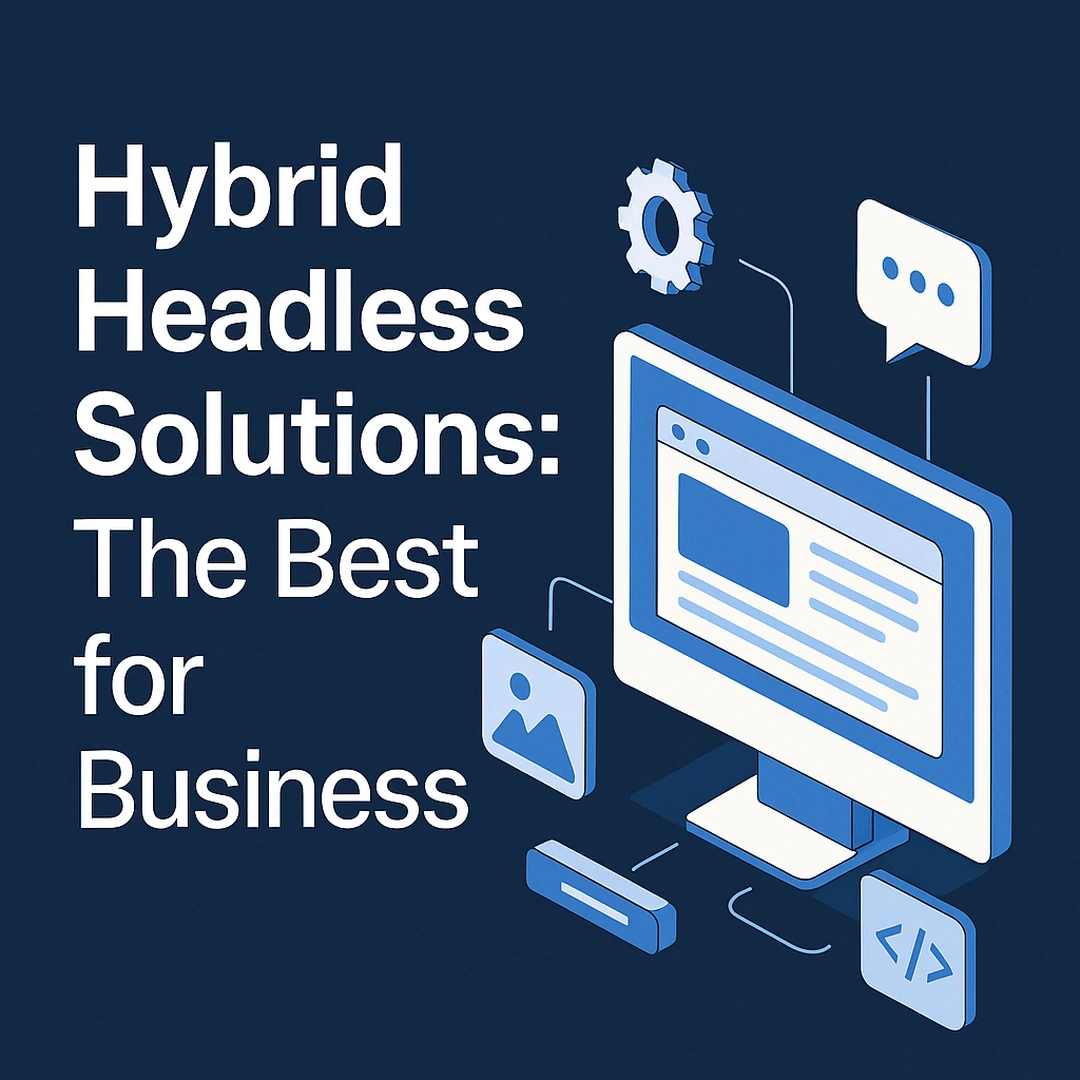Get your free consultation today!
Share with your Colleagues
Categories
ROI Calculator
Moonstone Interactive is the only San Francisco Bay Area web design firm and Internet Marketing expert that offers a free online ROI Calculator
Author: Christin Nolasco

A content management system (CMS) is essential for any business that wants to increase the value of its website by updating and expanding content that attracts visitors by fulfilling their needs and communicates the essence of its brand. CMS is a software tool that helps multiple contributors create, manage, and update the website content without requiring specialized technical knowledge.
Simply put, a CMS enables contributors to add, modify, and remove website pages, copy, and images without a programmer. A CMS handles the underlying infrastructure so that your marketing team can put more energy towards creating great content that drives results. You can create, approve and publish web content faster at a lower cost.
The Needs of Your Business
If you already use a CMS, which one do you use?
Choosing the right CMS is vital for managing any website.
This article will explore the different CMS you can utilize. It's essential to assess each CMS as it relates to your particular business needs.
Whichever CMS you choose, it'll have a significant impact on your operations and business results. From user experience, digital marketing, to website development, the CMS platform provides the tools to align your teams' content management and achieve your business goals.
Which Type of CMS Platform to Choose
There are four general types of CMS you can choose from: open-source, digital experience, traditional (coupled), and headless (decoupled).
Open-Source CMS provides license-free software developed by an open community of contributors—including agencies, designers, and developers. Some of the most popular open-source CMS platforms include WordPress, Drupal, and Joomla. WordPress is one of the most popular open-source CMS due to its ease of use and powers more than 39.5% of all websites.
As a license-free software, you can download open-source CMS at no initial cost. While most open-source solutions work out-of-the-box, a variety of customizations are available to meet your different business needs. Need additional features to customize your layout and optimize your content? In all likelihood, there's a plugin available that provides the desired features.
If a plugin isn't available, your agency or team can develop custom plugins and solutions for your business use case with services ranging from set-up, advanced customization, compatible plugins, and additional technical support as needed. Because of its prevalence, market expertise is readily available for open-source CMS platforms.
Digital Experience CMS provides some of the most robust solutions and a broad array of features—combining digital marketing capabilities such as marketing automation, persona management, personalized content, experimentation, and campaign tracking. It's integration tested and optimized for scalability and security. Digital experience CMS are built and managed by a single company. Using it typically involves purchasing a license to use the software, paying additional fees for updates, customization, and ongoing support.
Examples of popular digital experience CMS solutions include Kentico, Optimizely, and Adobe Experience Cloud.
As a solution that combines content management, e-commerce, and digital marketing capabilities—an integrated digital experience CMS provides the convenience of managing your content and optimizing marketing in a single platform. With some integrated CMS leveraging cloud services, such as Optimizely, these platforms may be extensible to your existing technology stack. Meaning you do not necessarily have to start from scratch.
If possible, look for a CMS solution that meets all of your requirements. If you are looking for a CMS for a new website, it's best to choose a solution that has all the important features and functions to meet your current and future business needs. Because digital experience CMS are commercial solutions, market expertise is readily available for these systems.

Image: Agility CMS
Traditional (Coupled) CMS provides a user-friendly interface that allows contributors to create and modify the UI themselves. Even if a company has a development team, a traditional CMS may be the better option if contributors want to be more involved in the UI.
WordPress, Drupal, DotNetNuke, and Squarespace are among the most prominent traditional CMS. From a technical point of view, a coupled CMS consists of a local database where content is stored, a content management backend, a predefined set of technology and structures, content and plugins for different system needs. However, unlike integrated CMS, it has challenges extending to existing systems.
In traditional CMS, all functionalities from content management to design and UI are in one place, making it simple to set-up and publish content quickly. It may be easier and cheaper to simply use the templates provided by a traditional CMS than to build everything from scratch. And for simpler websites, the templates provided by a regular CMS are likely sufficient.
With traditional CMS, content is deeply tied to the layout, which can make it harder to change aspects of the design. It should be used by businesses without the resources for developers. It may also be the better option for smaller organizations and simpler websites that do not have any features that a standard CMS template may not have.

Image: Agility CMS
Headless (Decoupled) CMS provides a way to create and manage content without coupling it to a particular output. Instead, it provides content as data over an API. The “head” is where content ends up and the “body” is where content is stored. Kentico Kontent, Headless Optimizely, Magnolia, and Contentstack are examples of headless solutions that enable a single content repository to service multiple front-ends.
Compared to traditional CMS, headless CMS lets you use whichever framework you're comfortable working in. This allows content managers and developers to work in parallel. Decoupling also makes it easier to make changes to the website design in the future. If you don't want to use a template for your website or if you desire added functionality, a headless CMS might be what you're looking for. However, make sure your business has the necessary resources and time to support headless CMS.
The main advantage of headless CMS is that it allows for more flexibility in the design of your website. Front-end developers can retrieve data from the CMS and present it in any way, opening up new possibilities. Instead of adhering to the limited functionalities and standard templates of a traditional CMS, companies with a dedicated front-end development team can use a headless CMS to design scalable and unique websites that differentiate you from your competitors.

Image: PCH Vector
Define Your Success Criteria
When choosing a CMS, it's important to define and understand your success criteria. Many companies are moving towards finding product-market fit through Minimal Viable Products (MVP), a minimal solution that solves the core problems of your users better than other solutions, to understand the core requirements and functionality needed by their CMS.
Many CMS platforms come with a multitude of features. Therefore, defining your MVP allows you to understand the value that your chosen CMS should deliver.
With open-source CMS platforms like WordPress, you can use themes and plugins to improve the digital experience. However, the more complicated or sophisticated the features you're trying to build with these tools, the more difficult it is. An open-source CMS may not be the right platform for a high-volume global multi-language website with sophisticated global compliance solutions.
A commercial integrated digital experience platform provides extensive capabilities for marketing automation, complex features, content personalization, and experimentation. However, it may be overkill for a midsize company with a limited local market and no online marketing expansion requirements.
Selecting the right CMS should start with understanding your customers, ideal prospects, and competition.
- Who is the audience? What is their desired experience? What are they trying to achieve? What is their journey to select your products or services?
- Who are your direct competitors and what digital experience do they have? How can you differentiate to win?
- How does your website fulfill your brand essence? What user experience will deliver your brand image?
- What online results do you need to achieve your company vision and business strategies?
- How can your website fulfill or support your marketing strategies?
The success criteria in the MVP serve as a foundation for your business to select the right CMS and create its website to fulfill the desired outcomes of customers, represent the brand, and achieve business goals.
Additional Requirements to Consider
In addition to business drivers, there are several technical considerations for selecting the right CMS—including the following:
- Scalability
- Performance Requirements
- Security Requirements
- Database Requirements
- Website Design Sophistication
- Functional Requirements
- CMS Features
- CMS Template Tools
- Editor Dashboard
- Persona Management
- Automated Lead Nurturing Capabilities & Features
- Reporting
Tips for a Successful CMS Implementation
Choosing the right CMS can be more challenging than using it. That's where an implementation partner comes in. An implementation partner is an agency with qualified expertise in its field. When selecting an implementation partner, it's important to consider their:
- Past Experience with Selected CMS
- Qualifications & Certifications
- Modes of Communication
- Level of Support & Guidance
- Integration & Migration Process
Moonstone Interactive is a vendor-certified partner and one of the leading San Francisco Bay Area agencies for effective CMS solutions. We specialize in four proven, respected CMS platforms including WordPress, Drupal, Kentico, and Optimizely.
Our range of expertise enables us to help clients understand their business needs and empowers their websites with the right CMS to achieve content goals. If you have any questions or need guidance on CMS implementation, reach out to us today.
.webp?ext=.webp)

